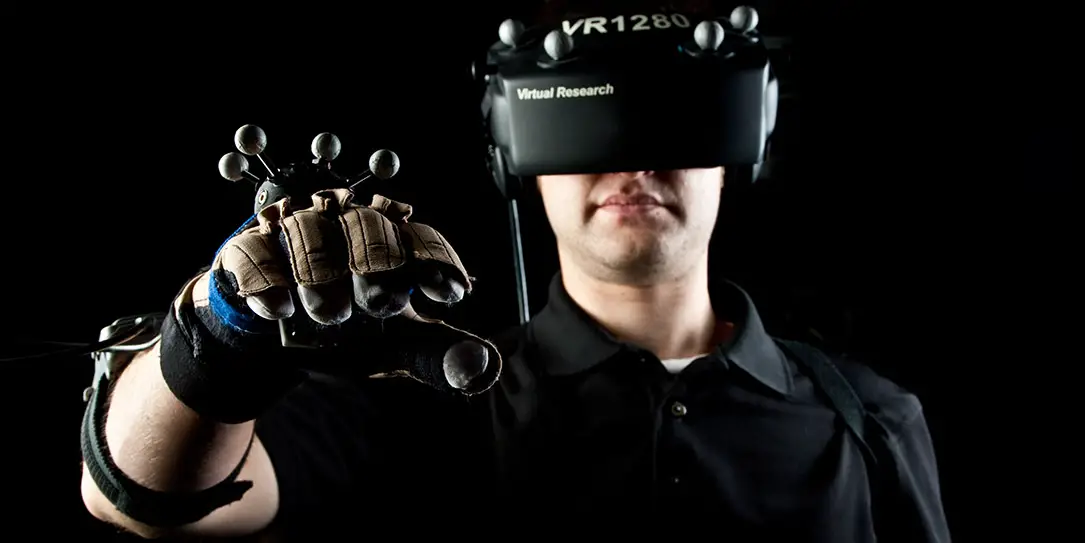Robots, virtual reality, and artificial intelligence have all been key elements of modern technological advancements. Naturally, many innovators have found new ways to connect these versatile technologies to both mental and physical therapy — and today, many of these applications have become viable alternatives to traditional therapeutic care.
Estimated reading time: 5 minutes
In this article, we’ll explore five ways that robotics and virtual reality headsets are being implemented in different forms of therapies, improving mental health, and translating into proper care. As more of these practical uses are implemented, effective therapy will become significantly more accessible to people around the world — even from remote locations.
1. Assessing Motor Function
Robots have always been a part of the physical therapy world. After all, even fictional media has come up with cyborg imagery for years. However, the more recent addition of virtual reality in robotics has made rehabilitation robots significantly more effective, offering patients and providers real-time visual, tactile, and auditory feedback to improve the effects of therapeutic exercises. This feedback can boost physical health and improve mental motivation, which is often a difficult hurdle to overcome.
Similarly, AI-enhanced robotics can identify improvements that the naked eye can’t see. While a physical therapist may not record any improvements in movement, these tools can better detect small, subtle movements that could indicate progress. Using this data, providers can better understand a patient’s healing journey, improve their predictions, and develop better treatment plans.
With the addition of VR, patients can even simulate real-world activities — such as driving or walking down a street — to assess practical motor skills. Being immersed in a game-like environment can help patients relearn their motor functions for their day-to-day activities from the safety of their homes.
2. Improving Prosthetics
While prosthetics certainly aren’t new, smart prosthetics are improving the quality of life for patients who experienced strokes, brain injuries, and other conditions that affected their mobility. For example, robotic exoskeletons of the future may increasingly be linked to brain-computer interfaces, which empower patients to control the movement of their prosthetics and other devices with their brains.
This advancement can make prosthetics much more natural to step into, reducing the learning curve that comes with figuring out how to move around in prosthetics. Patients can more quickly get involved in sports, type on computers, and function as they did before, so they can get the mental health benefit that comes from returning to their normal lives.
3. Improving Exposure Therapy
Modern technology isn’t just helpful for alleviating physical ailments. It can also support mental health, too. Virtual reality therapy has already been implemented by many therapists as a treatment for alleviating anxiety, phobias, and even post-traumatic stress disorder. Much like somatic therapy — a practice that helps resolve trauma by working through bodily sensations and painful memories — VR therapy can help patients face their fears in a safe, controlled environment.
This therapeutic use of VR can be particularly beneficial for children, who may prefer immersive treatments from the safety of their homes. Kids can easily take off their headsets when they need a break, or dive into an immersive world when they’re ready, which can enhance their feeling of safety in the midst of treatment. However, parents must keep in mind VR safety precautions — like avoiding the use of near staircases and clutter — to ensure no accidents occur.

4. Making Robo-Therapy Possible
While professional psychotherapists are still an essential part of mental health treatment, advancements in robots and AI have made supportive therapeutic treatments significantly more accessible and effective.
For example, the communication robot Tapia is now integrated with human emotions. It’s able to detect changes in human emotion when speaking with humans, making robots with speech recognition significantly more powerful. Other robotics firms are developing live tissue to use with robots, allowing them to look and feel more human.
As more technology like Tapia is developed, robo-therapy may become a viable solution for patients who are unable to afford in-person or virtual therapy sessions. Rather than exclusively relying on AI text chats as a supportive tool, patients can get personalized recommendations and prompts based on their answers and tone of voice. Patients can actually talk to these robots — and perhaps AI bots in VR simulations — about the problems they’re facing in their lives.
5. Soothing Patients With Companion Robots
Loneliness is an epidemic in the mental health world, and companion robots have intrigued many providers. But while companion robots have largely been limited to responsive robots like PARO, a stress-relieving seal, new AI, and VR technology could bring companion-based therapies into the metaverse and make interactions feel even more realistic.
Companion robots, such as Amazon’s upcoming Astro robot, can also serve utilitarian purposes. Household helper robots can be a boon to mental health, as they can remind patients to take medications, complete daily tasks, and perform their self-care. The future of companion robots is looking good.
Robots and Virtual Reality the Future of Therapy?
While therapy — especially psychotherapy — hasn’t often been linked to robots or VR in the past, the broad applications of these technologies are becoming more evident. Today and in the future, these immersive, smart solutions can make mental and physical therapies far more accessible and effective for better healthcare practices in the future.
What do you think of robots and virtual reality? Are they really the future? Please share your thoughts on any of the social media pages listed below. You can also comment on our MeWe page by joining the MeWe social network. Be sure to subscribe to our RUMBLE channel as well!










